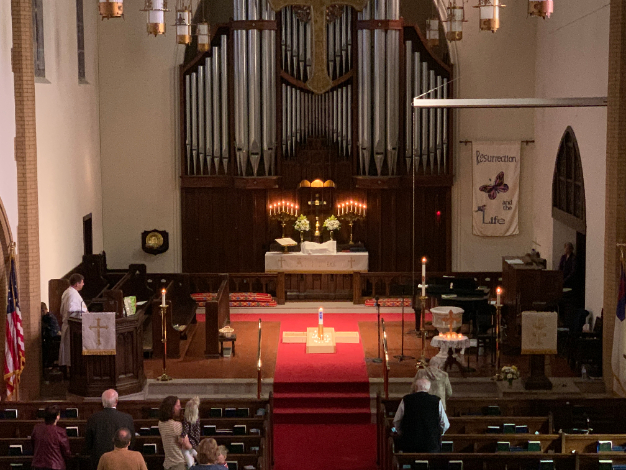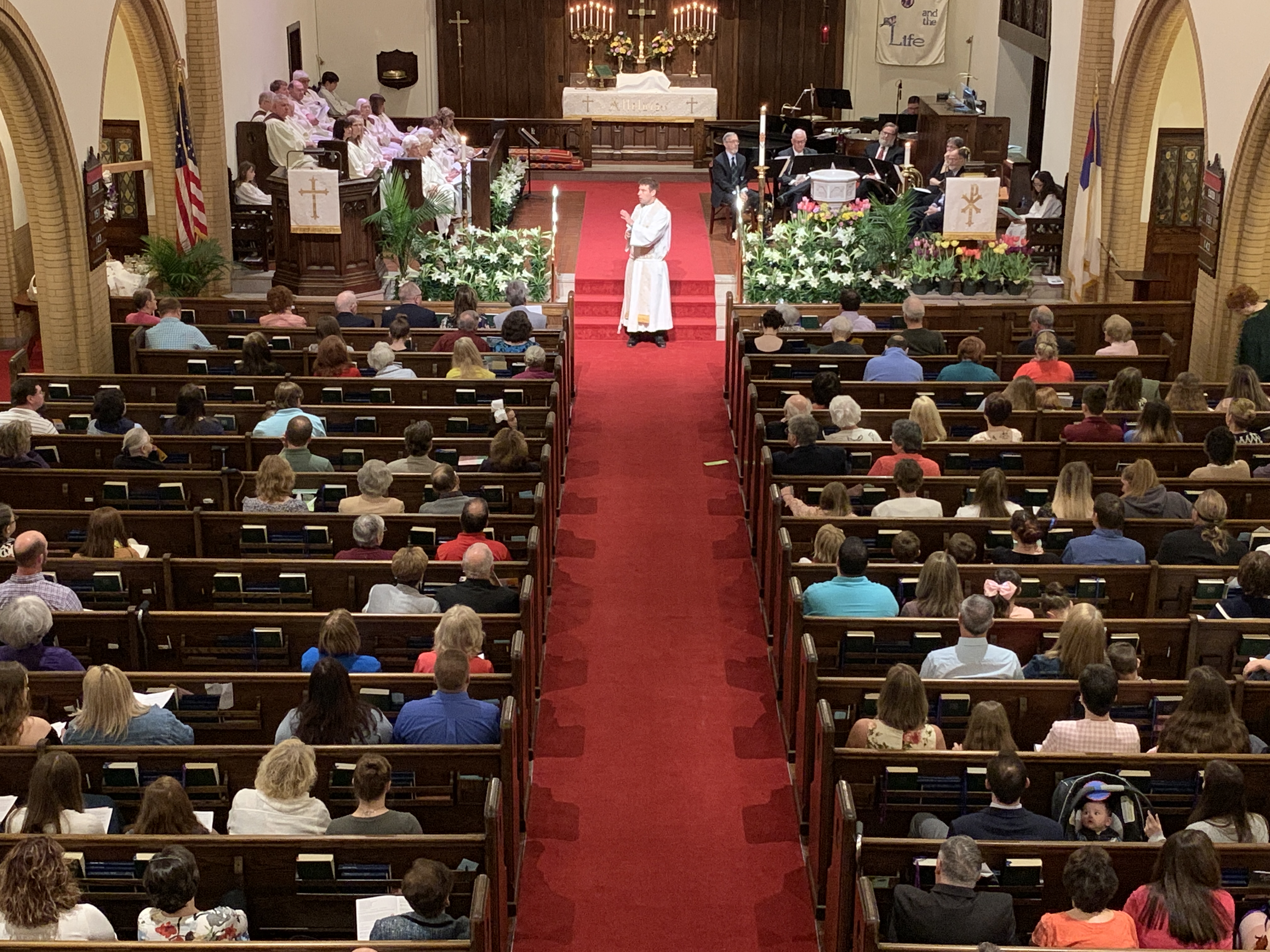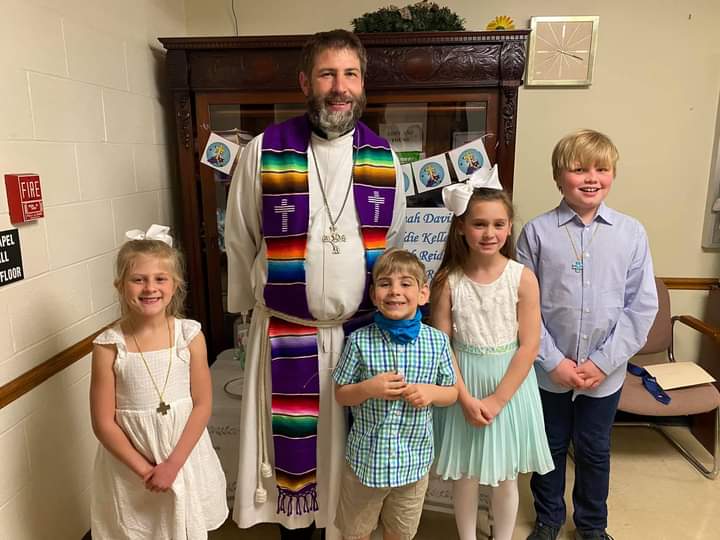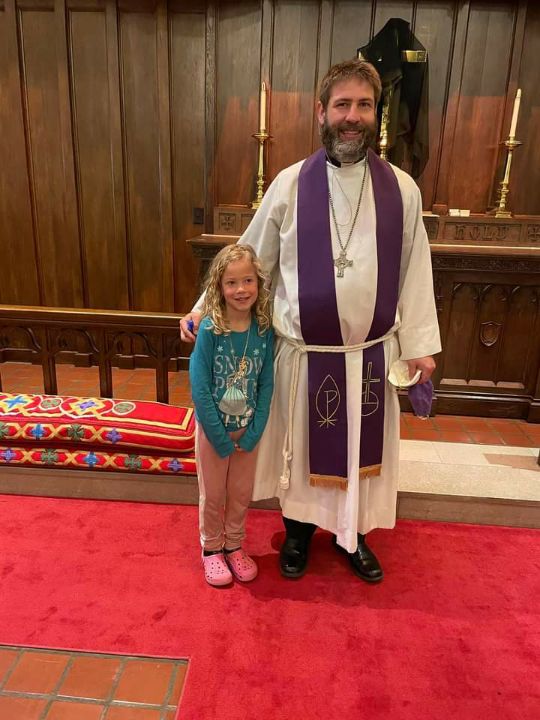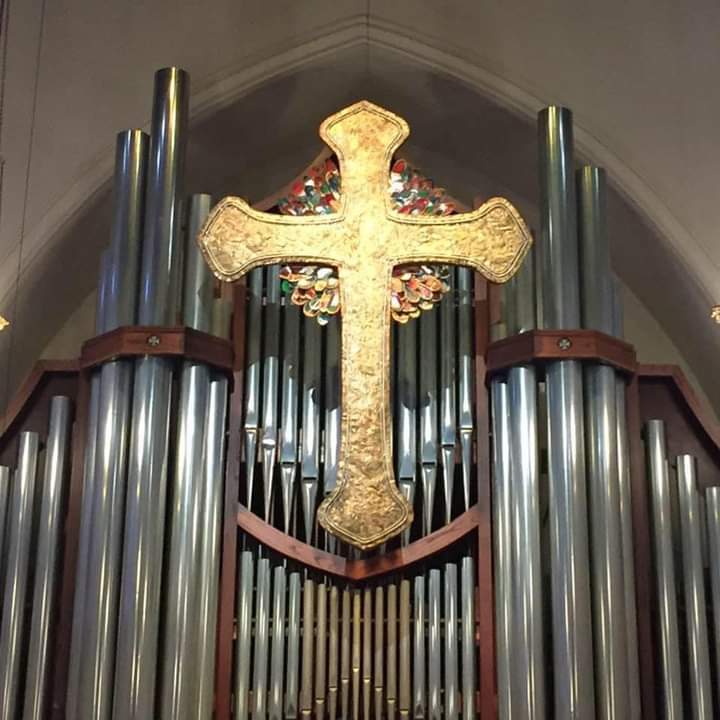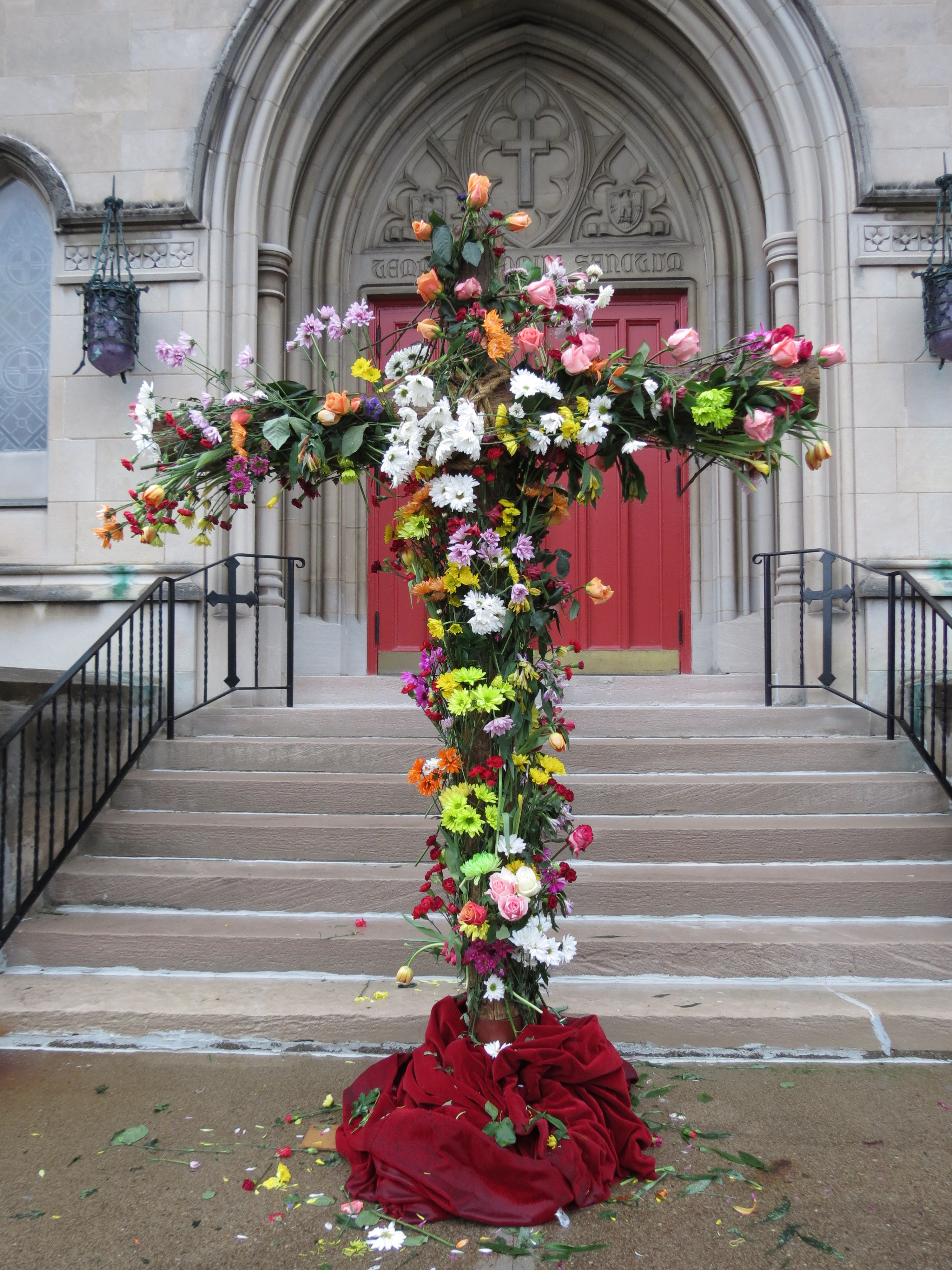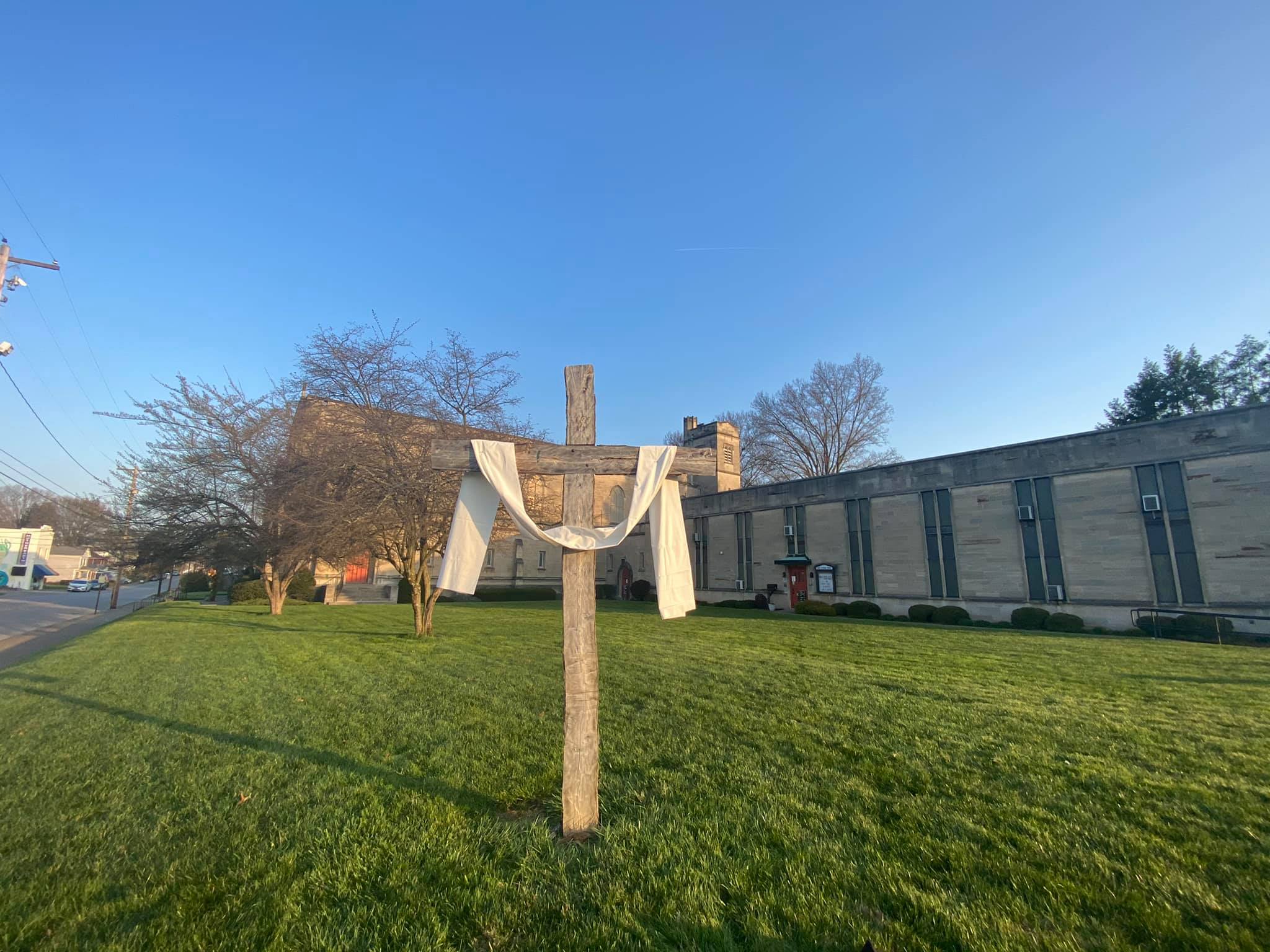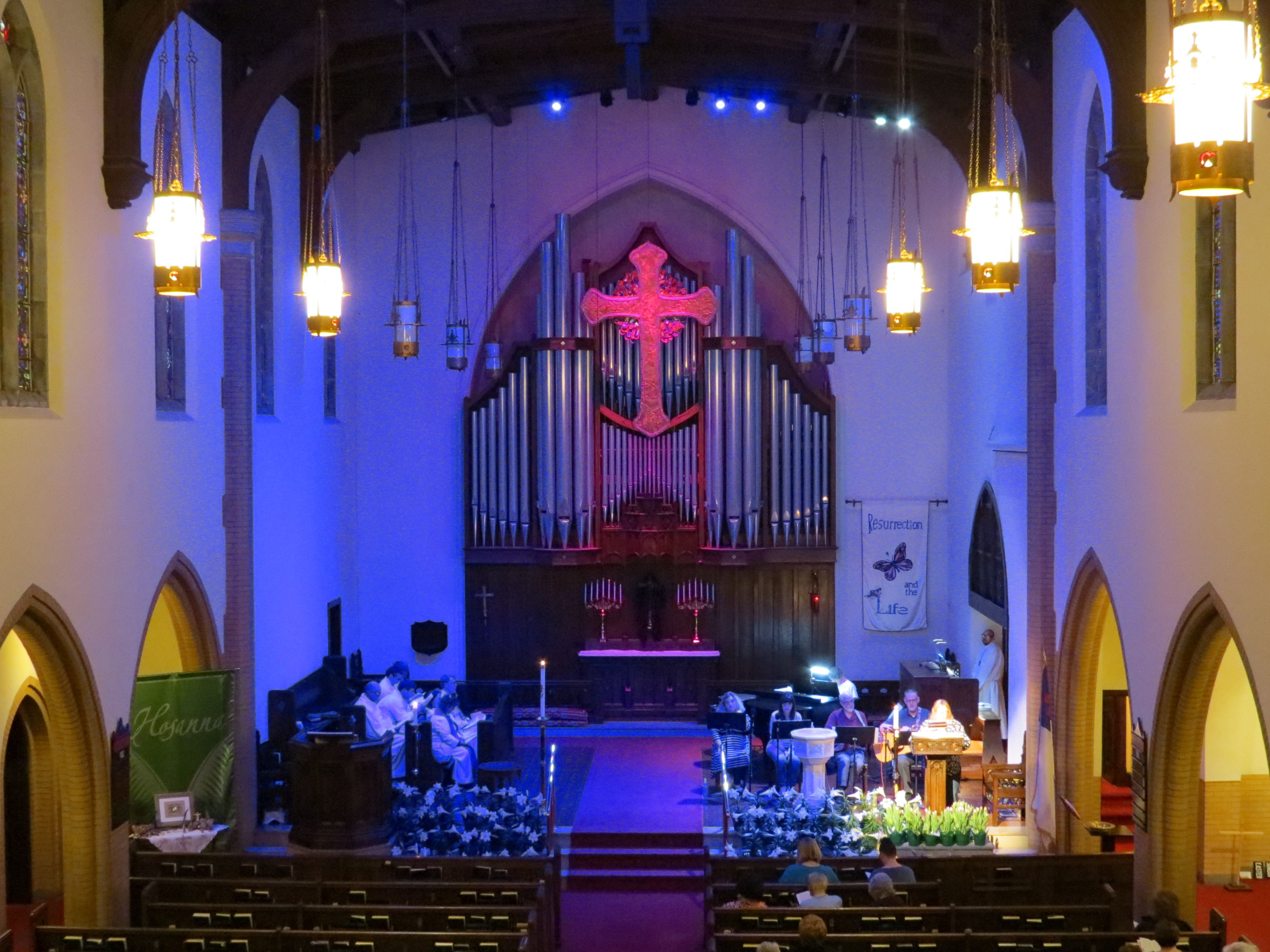Historical Time Line of First Lutheran
1860 - 1934
St. Johns Lutheran Church
1860 - 1870: Informal work done among Lutherans in Parkersburg
1885: Rev. Otto Meerwein comes to Parkersburg
1891: Rev. Meerwein dies and his widow, Wilhelmina continues work through
Sunday School
1891 - 1893: Services and Sunday School held at Meerwin home or Franklin School
August 31, 1893: Frauen Verein organized. Mrs. Meerwein served as the president
until her death in 1923
1893 - 1898: St. John's had a series of short pastorates under the leadership of Revs.
Freudenriech, Doepken, Plattner and Dieckhoff. Pastor Boecele of
Benwood, WV, served as an interim between pastors
Dec. 2, 1895: The Academy of Music, where the congregation was meeting, was
gutted by fire.
Feb. 15, 1895: Jugend Verein (Young Folk's Society) organized
May 24, 1896: First catechetical class confirmed
January 1898 - 1905: Under the pastorate of Rev. L. O. Hammer
Mar. 1905: A lot was purchased at Avery and Ninth and a half Streets.
The cornerstone was laid on March 23, 1905
Sept. 3, 1905: C. F. Longaker was called as pastor of St. John's
Oct. 15, 1905: The new church was dedicated and the first service was held in the
new church building
In 1908 the membership was about 140. The Rev. Longaker was suceeded by Rev. W. H. Fehr. The new church home had animated the congregation with new hope.
Mar. 19, 1909: The church and all of its contents were destroyed by the breaking of
the city water tank on Prospect Hill (now Quincy Hill)
July 1910 -Dec. 1916: Rev. H. S. Gilbert was pastor
St. John's congregation worshipped in various churches and the YMCA until a portable chapel was furnished by the Synod in 1911 and used until 1914.
August, 1914: The congregation moved into a brick chapel that had been built almost
entirely from the wreckage of the first Church buiilding
Fall of 1914: The Brotherhood was organized by Henry Kramer
May 1, 1917: The Rev. J. Leonard Fischer became pastor of St. John's
Dec. 1917: A lot was purchased at 19th and Plum Streets for a new church
Apr. 25, 1926: Ground breaking at the corner of 19th and Plum Streets
Aug. 15, 1926: The cornerstone for St. John's Evangelical Lutheran Church is laid
Oct 9, 1927: St. John's Church is dedicated with a congregation of about 275
members. A theatre organ from the Strand Theatre was installed and
used until 1957.
Two short years after the new building at 19th and Plum Streets was completed, a great depression swept the nation and the congregation found itself unable to pay off its mortgages and other debts. It finally became impossible to pay even the interest due on the large amounts owed.
On November 8, 1933, the largest congregational meeting ever assembled in the history of St. John's Lutheran Church declared in a resolution that the Church was 'hopelessly insolvent' and gave the Church Council and trustees authority to turn in the charter and dissolve the corporation. The resolution passed unanimously. St. John's was officially disbanded on January 15, 1934.
Post January 1934
First Lutheran Church
Reorganization by the congregation resulted in changing the name to First Lutheran Church.
The Rev. J. Leonard Fischer served the congregation from 1917 until his resignation
and final sermon on November 25, 1934.
Sept. 16, 1934 - June 20, 1935 - Seminary Senior, David E. Kinsler, served the congregation.
June 18, 1935 - First Lutheran moved from the Pittsburgh Synod to became a member of the West Virginia Synod.
June 20, 1935 - David E. Kinsler was ordained, and 10 days later, June 30, was installed as Pastor of First Lutheran, where he served until becoming an Army Chaplain, July 12, 1942.
The Rev. Wade H. Koons served the congregation from December 21, 1949 through May 26, 1953.
The Rev. H. G.Schwegler was ordained May 1, 1954 and served until April 30, 1968.
Through the dedication and efforts of the congregation, great strides were made both in membership growth and financial stability during the 1950's.
In 1957, an Allen Electronic Organ was purchased by the congregation and was used until December 1983.
Another milestone was accomplished in the 1960's, when in 1968 the Schwegler Educational Building, honoring the Rev. H. G. Schwegler, D.D., was built and dedicated.
The congregation established the Gift Improvement Trust Fund and many improvements were made, including the refurbishing and renovating of the church property. New lighting fixtures, needlepoint kneelers at the Altar rail, and a Cross above the Altar were added in the Sanctuary. A paved parking lot was added on property purchased adjacent to the Educational Building.
The Rev. Bailey Harrington came to serve the congregation November 15, 1968, serving until January 10, 1971.
He was followed by the Rev. Manfred K. Bahmann who served from August 1, 1971 through September 1, 1973.
The Rev. David L. Scharf came to the congregation August 16, 1974 and served through August 31, 1984.
The 50th Anniversary of the Church building was celebrated in October, l977, at which time all living pastors but two participated in the Service. The Rev. H. G. Schwegler, D.D., was named Pastor Emeritus at that time.
It was the desire of the original congregation that the finest pipe organ be secured to complete the Sanctuary and provide for special music with which to worship and enjoy beautiful musical experiences. This ultimately prompted the appointment of an Organ Committee in March, 1980.
After seventeen months of study and research, the Committee recommended a Zimmer pipe organ and the congregation approved a fund drive. With the generosity of the Church members, friends and the comunity, a contract was signed with W. Zimmer and Sons, Charlotte, North Carolina, on August 30, 1981.
The new organ was designed according to the best traditions of organ building in general and, more specifically, in keeping with the great Lutheran Church music heritage. Martin Luther and the Reformation had a profound effect on the art of organ building, as he established congregational singing as a regular part of worship. By making the congregation active participants in the Worship Service, congregational singing developed.
The pipe organ, as it developed during the 16th and 17th centuries, filled that role of leading congregational singing without equal. A large part of our organ is directly comparable to those great instruments built in that time. Our organ possesses a gloriously clear and brilliant tone that makes us want to sing to the Glory of God.
In later times, and right up to the present day, church music has continued its development. Various tone elements were incorporated into our organ to enhance the ability of the organ to interpret such music and to accompany the choirs as well as lead the congregation in song. And, as a solo instrument, it is capable of playing the world's very wide repertoire of music composed for organ.
A pipe organ, more than any other musical instrument, is very much dependent on its acoustical environment. We are fortunate to have a Church which possesses good acoustical characteristics in abundance. Our pipe organ was built to take full advantage of this, and the results lift it far above the ordinary.
The dedicatory service for the new pipe organ was held on December 11, 1983. Mr. Wilhelm Zimmer, W. Zimmer and Sons, participated in the dedicatory service which was followed by a dedicatory recital featuring Eugene Wickstrom, guest recitalist. Resident organist was Gordon W. Jemison.
At the time of the dedication, our organ was one of only 300 Zimmer instruments in the United States, with its unique designation: Opus 304, A.D. 1983
The Rev. James F. Kinsler, son of The Rev. David E. Kinsler (9/16/1934 - 7/12/1942)
arrived November 1, 1985 and served the congregation until August 10, 2008.
The 25th anniversary celebration of the installation of the pipe organ was held on September 1, 2008. The celebritory recital was presented by L. Randall Turpin, guest organist, Jan Jemison Smith, resident pianist, Holly Oberle, guest organist (and former resident organist), Sherry Fosselman, resident organist, and LynnJemison-Keisker, guest organist.
The Rev. Roger M. Harms served as Interim pastor from August 30, 2008 through June 30, 2010.
Our current pastor, The Rev. Ian B. Reid, was installed on July 1, 2010.

